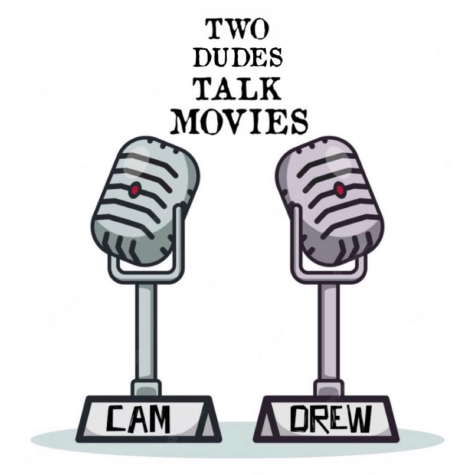Cute, cuddly and horribly wrong
“Cute, cuddly and horribly wrong”: It’s not simply the tagline for Mondo Media’s breakout hit “Happy Tree Friends”; it’s the philosophy of creators Kenn Navarro and Rhode Montijo.
Back in 1999, when the pair were both employees at upstart Mondo, a plan was hatched to change the face of online animation with the simple phrase, “Resistance is futile.”
This innocuous phrase, accompanied by a crudely drawn cartoon rabbit, was responsible for the “Happy Tree Friends” evolution from a laughable side project to a forerunner in online cartoon.
Inspired by the Golden Book children’s stories of their youth, Montijo and Navarro were inspired to create, as Navarro put it, a children’s animation show for adults. Filmed in eight-frame-per-second animation, the idea for the show was a lo-fi interpretation of cute and cuddly characters eating it in one horrific manner after another in every episode.
It was this brash and bawdy style that ingratiated the pair to both Mondo and the show’s eventual legions of fans. With minute-long episodes filled with some of the most gore-soaked debauchery this side of Quentin Tarrantino, the show instantly became a hit in the cartoon underground.
With the release of a pair of semi-hit DVDs and a merchandising deal with chain outfitter Hot Topic, however, the show seems poised to break into the mainstream.
“They’re just guys with sick senses of humor who know what appeals to them,” said Monica Jara, a publicist for Mondo Media. “They’re really just making a kiddie cartoon for their generation.”
California dreamin’
Navarro and Montijo both grew up in northern California but didn’t meet until working at Mondo. It was there the pair became friends and began conspiring with fellow co-workers Aubrey Ankrhem and others, who would eventually serve as writers or actors on the show. The pair’s beginnings were less than auspicious, though.
“I worked at a video store owned by my parents, but it was a bit of a mixed blessing,” Navarro said of his first real gig before Mondo. “I mean, what else could you do and still watch movies? But it got boring real quick.”
Montijo, likewise, came from a working-class background where aspirations of animation or programming took a back seat to more mundane fare.
“I worked more crappy jobs than I care to talk about,” Montijo laughed. “Let’s just say I’m glad the show panned out.”
Planting a ‘Tree’
While working at Mondo, the idea for “Happy Tree Friends” was hatched as an escape from other forms of work around the office. With the creation of the rudimentary “Cuddles” character hanging above Navarro’s desk, the seeds had finally been planted.
It would be almost a year before the first episode of “Happy Tree Friends” saw release though. After a mere four episodes, the show began creating a buzz in animation for its lo-fi aesthetic and its ceaseless but hilarious brutality. And while other tech companies experienced the economic pinch of Bill Clinton leaving office, the men of “HTF” were somehow spared.
“We were part of the whole dot-com boom and we were also around for the bust,” Navarro said. “We got a lot of feedback from fans wanting more episodes so we kept at it and got the opportunity to compile them all on DVD.”
It was with the show’s first DVD, “Happy Tree Friends: First Blood” that the animators got their first real taste of success with a national audience. Packing the DVD with almost two dozen episodes and a slew of extras, Navarro, Montijo and company were playing directly into the hands of their core audience: computer savvy, 20-something animation fans.
All for the fans
“(Putting out the first DVD) was awesome,” Navarro said. “We were so pumped we had a sales thermometer and we would wait and check it daily. Unfortunately, sometimes it only went up once or twice a day, but we started finding new markets and a lot of other people.”
While the episodes themselves offer a mere half-hour of entertainment, “First Blood” was littered with extras to the tune of an additional hour of viewing pleasure. Again, the pair knew its audience and knew what could break the show out of obscurity. If the episodes couldn’t draw fans, Mondo could at least cram as much hilarity and commentary as humanly possible into the package.
“I always appreciated the extras,” Navarro said. “We try to throw in as much as possible on the cheap. Even if we couldn’t get a lot of fans, we could makes the ones we do have really happy.”
The show has now inspired a slew of fan Web sites and a message board home to nearly 5,000 devotees. The show’s Web site, receives nearly 6,000 hits daily and even offers fans the opportunity to pose questions to the show’s creators and staff.
With the success of “First Blood” came more episodes and the pressure of either repeating the success or simply becoming another fly-by-night online hit.
“HTF” had its primary creative team intact and now had an added push from the Mondo brass. Navarro and Montijo were able to expand their operation after their show’s success and again began cranking out vile homages to extreme cartoon violence.
Bigger and better
With the budget improvement came massive Internet upgrades which facilitated the look of the show and the speed at which episodes could be produced.
“We started off with the lowest frame rates because we had to think of Internet limitations back then,” Navarro said. “We could pump out an episode a week though, and now we use a higher frame rate and are able to stream things.”
The creative process had also changed slightly as more animators and actors were being brought in to provide voices or pitch ideas. The brainstorming is often close to what Montijo calls “organized chaos” by which the creative team sits down and comes up with as many ideas as possible and then sees which ones can fly as episodes.
“Those sessions are our springboard to get the funnies,” Navarro said. “Whatever makes us all laugh is probably worth keeping.”
Next for the crew was a follow-up DVD. With a cache of another 18 episodes, it was again time to ply the group’s wares, as it were, to the home video market. This time, however, the budget was bigger, the extras were longer and the audience was even more loyal.
The group handpicked episodes based on feedback from the show’s Web site and took greater input from the rabid fans the creators were trying to satisfy. What emerged was a little surprising, even to Montijo and Navarro.
The Vietnam veteran Flippy emerged as a favorite character while new Friends were added in the form of Cro-Marmot and Buddhist Monkey. While Buddhist Monkey is simply a kung-fu loving Shaolin monk, Flippy is a crazed and scarred soldier often responsible for the gruesome fates suffered by the show’s saccharine characters.
“For some reason, Flippy got overwhelming response,” Montijo said. “He was the last character we would expect because he’s so twisted, but people really dig him. Those sickos!”
Buddhist Monkey, on the other hand, was an idea Montijo had when the show first began, but thought the character was so good he deserved his own show. On “Happy Tree Friends: Second Serving,” that’s exactly what he received. With the help of friend and fellow cartoonist Alan Lowe, Buddhist Monkey was brought to life via a parody of “Enter the Dragon” crossed with “The Matrix.”
“Buddhist Monkey is just this crazy excuse to do some rock ‘n’ roll credits and have some high octane ‘Dragonball’-style mayhem,” Navarro said.
Soon after the completion of the Buddhist Monkey short “Enter the Garden,” “Second Serving” was released. Montijo said sales of the DVD have been good, while fan response has been overwhelming.
Selling out
The two animators still seem somewhat mystified, however, at their own success.
“All I could think of was ‘those fools!'” Navarro said. “They could have fed a starving child and instead they bought our DVD.'”
Because of the success of “Second Serving,” “Happy Tree Friends” was offered a licensing deal with Hot Topic, the pseudo-goth chain store appearing in malls across the country. The store now carries a slew of HTF merchandise ranging from T-shirts and DVDs to posters and other clothing brandishing the character’s cute faces.
“God, I’ve waited years to sell out,” Montijo chuckled. “It’s great.”
While many denounce cartoon violence, “Happy Tree Friends” proves there will always be an audience for bawdy, irreverent violence and a liberal dose of sadistic humor.











































